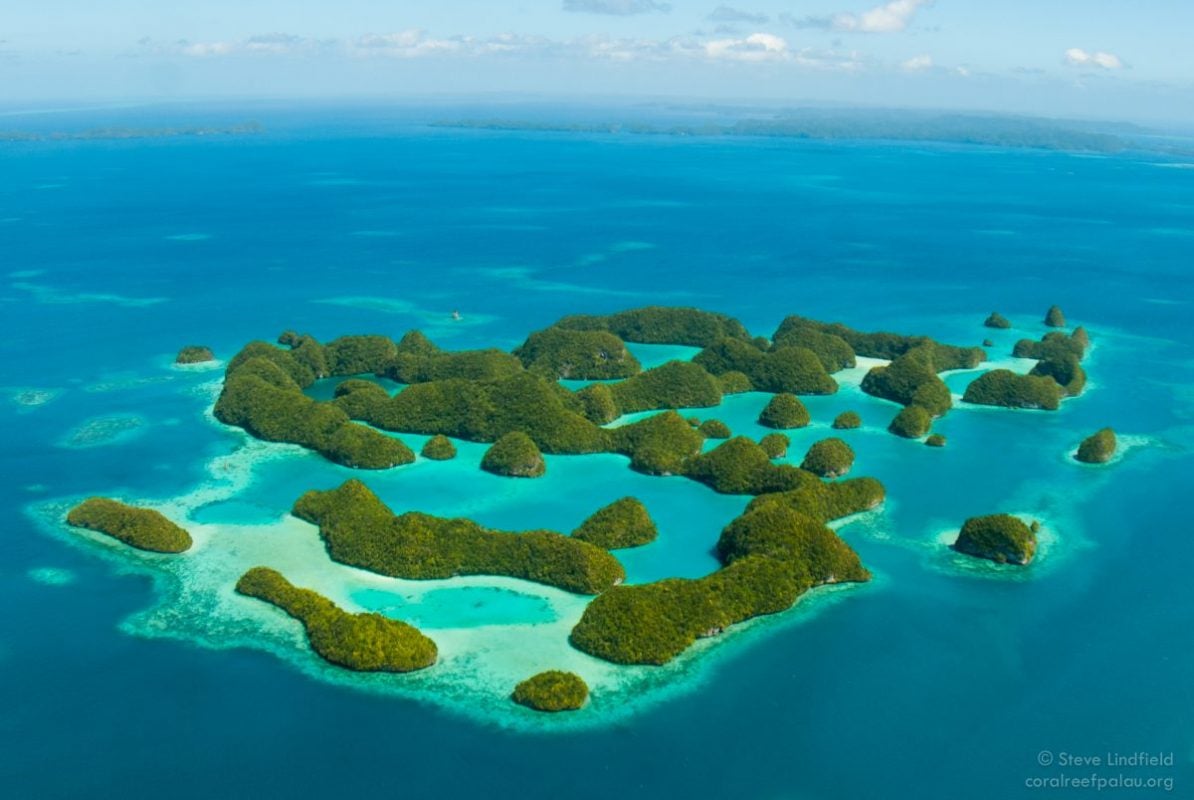The island Republic of Palau in the western Pacific Ocean is the first nation to ban environmentally harmful sunscreens, effective 2020, to protect one of the world’s most diverse marine ecosystems.
Anyone selling banned sunscreens after the date will be hit with a $1,000 fine.
The goal is to protect the islands’ unique ecosystems, which are home to more than 500 varieties of hard and soft corals, more than 1,500 fish species and more then 300 varieties of sponges.
It is also home to Jellyfish Lake, a saltwater lake filled with millions of virtually stingless golden jellyfish that are only found there.
“I’m encouraged about it,” says UCF biologist John E. Fauth, who was part of an international team that reported in a 2015 study that the common sunscreen ingredient oxybenzone was deadly to coral.
“When the leaders are going this way, that means some of the other countries should pay attention and start to follow suit.” – John E. Fauth, UCF biologist
“Part of Palau’s international reputation is being a leader in sustainable ecotourism,” he says. “When the leaders are going this way, that means some of the other countries should pay attention and start to follow suit.”
Hawaii and the Dutch island of Bonaire in the Caribbean will start banning sunscreens with the ingredients oxybenzone or octinoxate in 2021.
An article published this month in the medical journal The Lancet supported the move and advised dermatologists to encourage patients to wear protective clothing and use sunscreens that contain the reef-safe active ingredients zinc oxide and titanium dioxide instead of sunscreens with ingredients banned by Palau, Hawaii and Bonaire.
Fauth says independent studies that followed the initial 2015 report expanded on their results by demonstrating harmful effects of oxybenzone on many other organisms beyond corals, including humans.
Furthermore, a report by a Palau-based research group found Jellyfish Lake to have widespread sunscreen products in it, thus helping initiate the country’s ban.
Fauth says oxybenzone can have negative effects on marine life even at extremely low amounts.
“The oxybenzone concentrations we’re seeing out in the environment … are way above the threshold needed to cause damage.” – John E. Fauth, UCF biologist
“The oxybenzone concentrations we’re seeing out in the environment, where there are a lot of swimmers and snorkelers, are way above the threshold needed to cause damage,” he says.
According to the National Oceanic and Atmospheric Administration, coral reefs contribute more than $375 billion a year to the world’s economy despite covering less than 1 percent of the planet as well as provide a source for new drugs to fight devastating diseases such as cancer. Coral reefs also are immensely important and biologically diverse ecosystems that have millions of dollars in value to U.S. fisheries. Additionally, coral reefs protect beaches and shorelines against erosion and destruction by waves and storms.
In the 2015 study that spurred the bans, the team exposed coral larvae and cells of adult corals to increasing concentrations of oxybenzone in the lab. They discovered that oxybenzone deforms coral larvae by causing them to encase their own body in a skeleton, making them unable to float with currents and disperse.
Oxybenzone also causes coral bleaching, which is a prime driver of coral mortality worldwide. Corals bleach when they lose or expel the algae that normally live inside them, thus losing a valuable source of nutrition.
“If there are too many visitors, if they’re not following best practices, they could have a harmful effect.” – John E. Fauth, UCF biologist
In addition, coral larvae exposed to increasing oxybenzone concentrations suffered DNA damage. Cells from seven species of corals were killed by oxybenzone at concentrations similar to those detected in ocean water samples. Fauth’s role in the research was analyzing the data and determining the concentrations that caused damage.
Fauth’s team’s study is available in the National Oceanic and Atmospheric Administration Institutional Repository.
Palau’s list of banned sunscreen ingredients is more extensive than other locations. The country’s list also includes octocrylene, 4-methyl-benzylidene camphor, methyl paraben, ethyl paraben, butyl paraben, benzyl paraben, triclosan and phenoxyethanol.
“We have so many people on the planet, so many tourists, even well-intentioned tourists visiting these really beautiful sites. If there are too many visitors, if they’re not following best practices, they could have a harmful effect,” Fauth says.
Fauth joined UCF in 2003. He has a doctorate in zoology from Duke University and previously worked at the College of Charleston and Denison University. He has written more than 35 articles and book chapters, serves on several boards and was a founding member of the U.S. Coral Disease and Health Consortium. He is a member of UCF’s Sustainable Coastal Systems Cluster.





